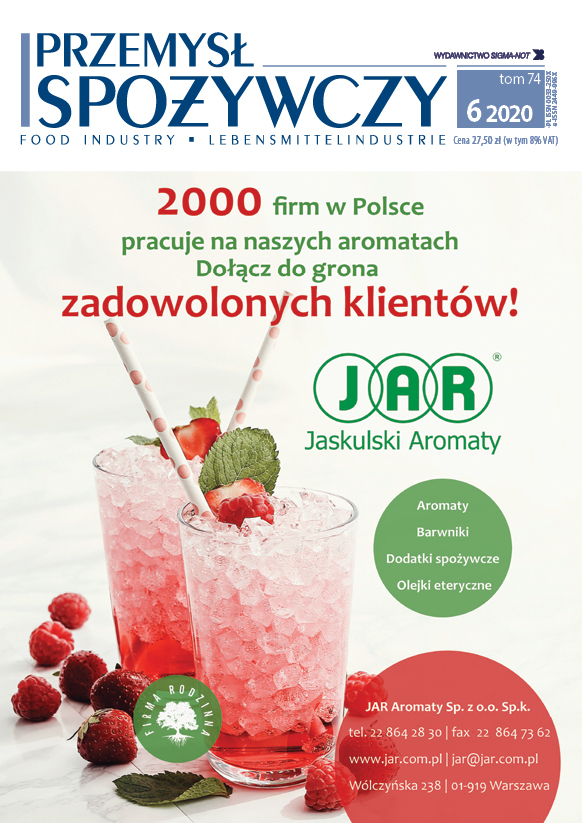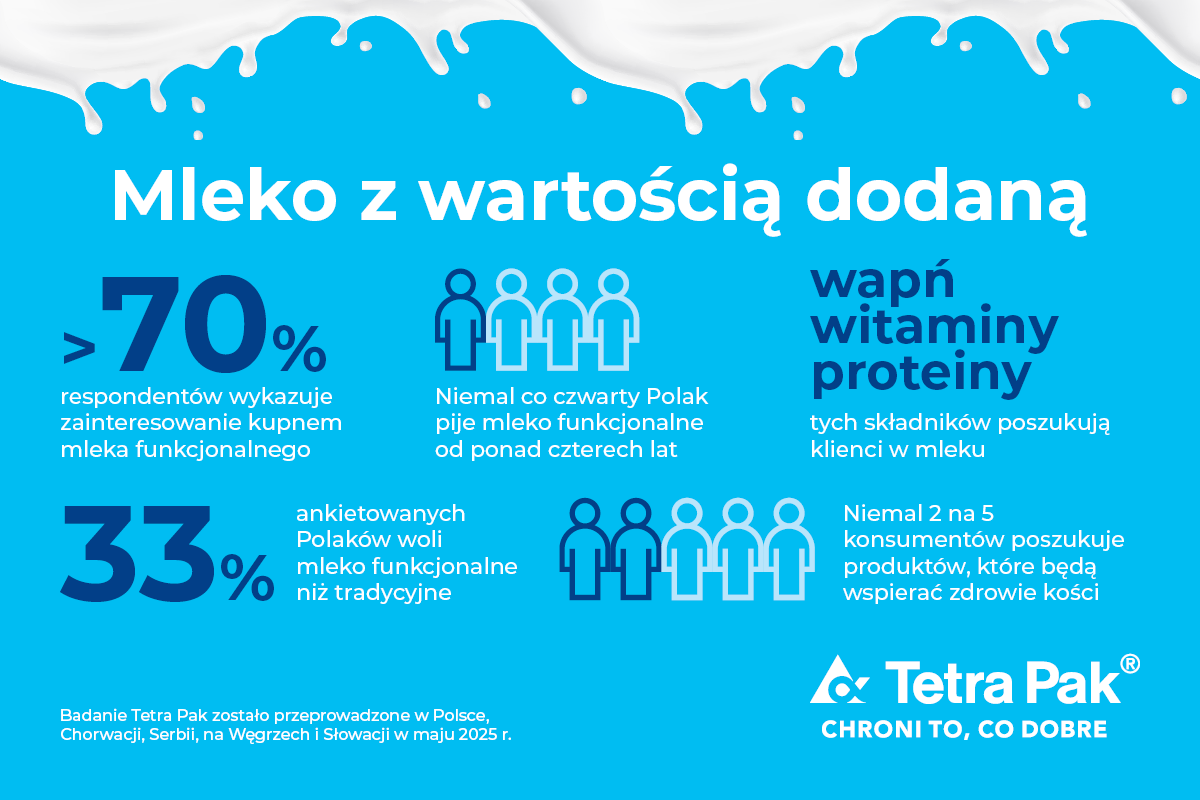ECONOMY
- 2 Development of Polish Agri-Food Trade in 2019 – Małgorzata Bułkowska (DOI 10.15199/65.2020.6.1)
Poland is one of the main producers and exporters of food in the European Union. The article presents the trends in Polish foreign trade in agri-food products in 2019 and highlights the main challenges faced by Polish food producers and exporters. Despite unfavourable external circumstances the results of Polish foreign trade in agri-food products in 2019 have improved. However, the further development of Polish exports will largely depend on how Polish producers cope with the crisis caused by the COVID-19 pandemic and the situation on foreign markets.
KEY WORDS: foreign trade, agri-food products, geographical and product structure
LAW
- 7 Work on Allergen Thresholds in Food on The Example of Selected Countries – Dominika Jeżewska (DOI 10.15199/65.2020.6.2)
Allergy is a widely spreading disease. Although food is not the most common trigger of allergic reactions in humans, the increasing number of individuals suffering from allergies and food intolerances worries medical communities, nutritionists and national authorities. For many reasons, it is impossible to provide consumers with food that would be completely allergen-free. However, what should contribute to enhancing the quality of life of people suffering from allergies and food intolerances is correct food labelling. In order to strengthen the protection of the health of the consumer, relevant EU regulations were introduced which require mandatory labelling of allergens contained in the product. Unfortunately, some related issues are interpreted ambiguously and thus many countries decide to introduce national provisions or guidelines. Therefore, before introducing a foodstuff on foreign markets, particular attention should be paid to regulations on food labelling, including allergen labelling.
KEY WORDS: allergens, food law, regulations
TECHNICS – TECHNOLOGY
- 11 New Water Treatment Technologies in The Food Industry – Fabian Dajnowiec, Jan Marjanowski (DOI 10.15199/65.2020.6.3)
According to forecasts, until 2030 in the world water availability will have limited and it will be compared to about 40%, while 50% of the Earth’s population will remain without access to drinking water. Therefore, efforts should be made to improve water treatment and recovery from possible and available sources, often colloquially called unconventional sources. In this article two methods that can be successfully used in water management in food-processing plants are present. The first is forward osmosis (FO), which can be classified as membrane separation techniques using the existence of a driving force between the sides of the semi-permeable membrane. The second technique which allows water desalination is capacitive deionization (CDI), which uses the effect of low voltage direct on the fluid flowing between the electrodes. New methods of water purification provide the possibility of obtaining cheaper water for food-processing plants.
KEY WORDS: water recovery, water treatment, forward osmosis (FO), capacitive deionization (CDI)
- 20 Plant Extracts in Pastry Products – Mariola Kozłowska, Aleksandra Gawinowska, Agata Fabiszewska (DOI 10.15199/65.2020.6.4)
Plant materials can be used in food products in the form of whole, crushed or dried ingredients improving their aroma, color and taste. As a source of biologically active compounds, among others polyphenols with documented antioxidant activity, also in the form of extracts, can be added to pastry products, especially those rich in fats. Such enrichment, with plant extracts can improve the functional properties of the prepared dough, improve the nutritional value of the product and prevent adverse oxidative changes in the fat it contains, extending its shelf life. In addition, plant extracts are considered by consumers to be safer than synthetic food additives.
KEY WORDS: antioxidant activity, oxidative stability, plant raw material, plant extracts
FOOD – FEEDING
- 25 Pumpkin – A Rich Source of Bioactive Compounds – Monika Rybarczyk, Bartosz Kulczyński, Anna Gramza-Michałowska (DOI 10.15199/65.2020.6.5)
Pumpkin, belonging to the family Cucurbitaceae, can be grown all over the world not only because of its sensory qualities, but also for its valuable health-promoting properties. As a medicinal plant, it has proven anti-diabetic, anti-inflammatory, antiviral, analgesic, anti-ulcer, antioxidant properties, prevents heart disease and supports the treatment of urinary tract diseases, wound healing and improves metabolism. Due to its nutritional value and lack of dominant sensory features, pumpkin pulp is widely used in gastronomy and food production. In recent years, pumpkin has gained the status of a valuable material used in the process of enriching the plant matrix with various ingredients, including mineral components and vitamins, aimed at obtaining a product supporting diet therapy of many diseases.
KEY WORDS: pumpkin, Cucurbitaceae, bioactive compounds, pro-health influence
- 32 Analysis of Non-Fat Vegetable Snacks in Terms of Consumer Acceptance – Agnieszka Bąkowska, Elżbieta Nijaka, Agnieszka Strażyńska, Maria Sielicka-Różyńska (DOI 10.15199/65.2020.6.6)
A large proportion of Poles reach for different snacks every day. For this type of products, heat treatment is of key importance. Although fat is a carrier of taste, many consumers strive to reduce its content in their diet. Air-frying seems to be an interesting approach. The aim of the study was to compare the quality of vegetable snacks prepared from sweet potatoes, potatoes and carrots using deep-fat frying and air-frying. As part of the research, a consumer sensory evaluation of products was carried out, aimed at assessing the degree of desirability of product attributes and willingness to purchase prepared snacks. In addition, total fat content and water content in snacks were determined. The study showed that the use of air-frying is an interesting way to prepare non-fat vegetable snacks that might be accepted by consumers.
KEY WORDS: snacks, air frying, consumer acceptance, fat
EVENTS
- 6 World Accreditation Day 2020 – food supply chain
- 17 Is it possible to increase the levels of aluminum recovery?
- 31 Product label in view of new food labeling requirements




